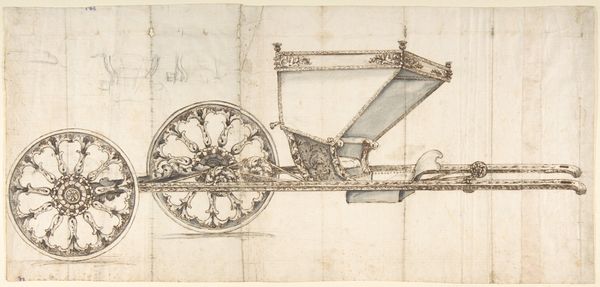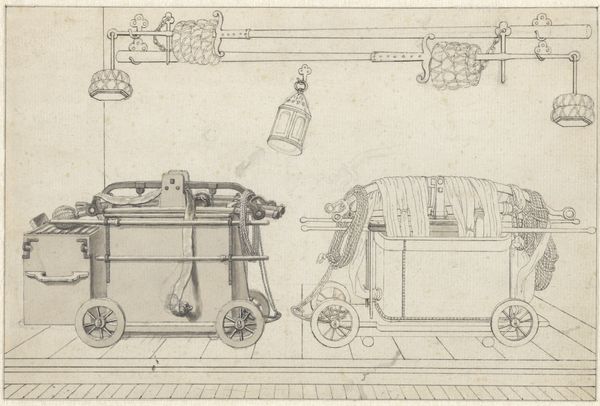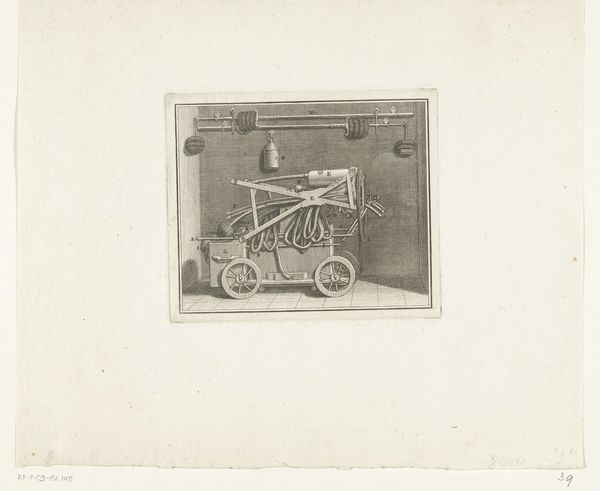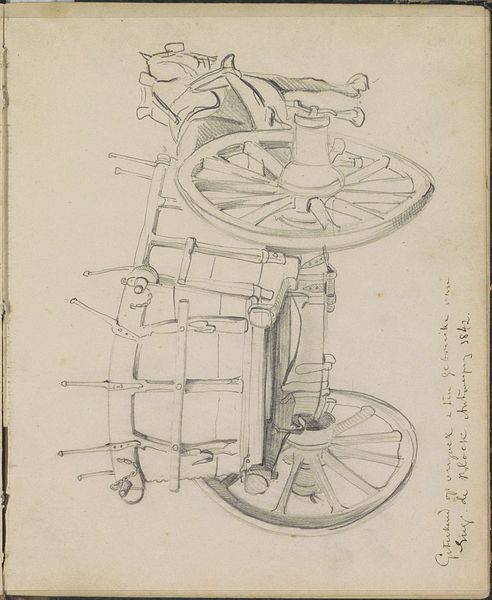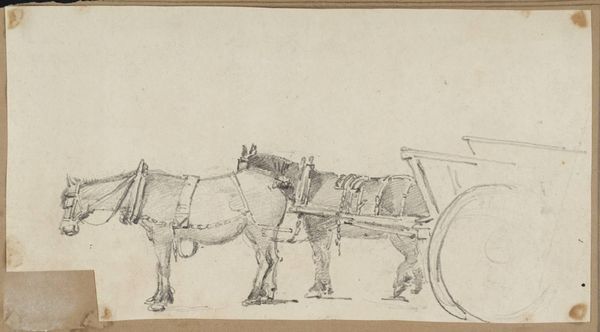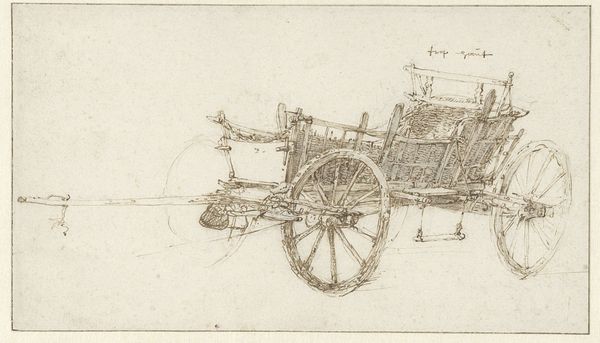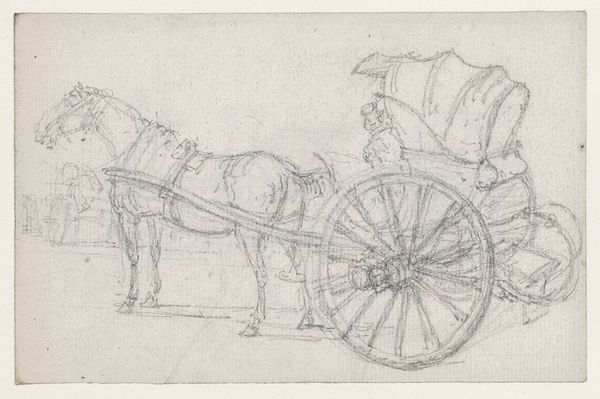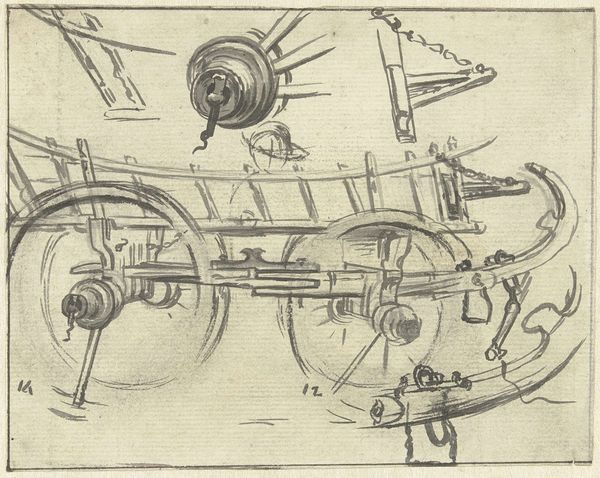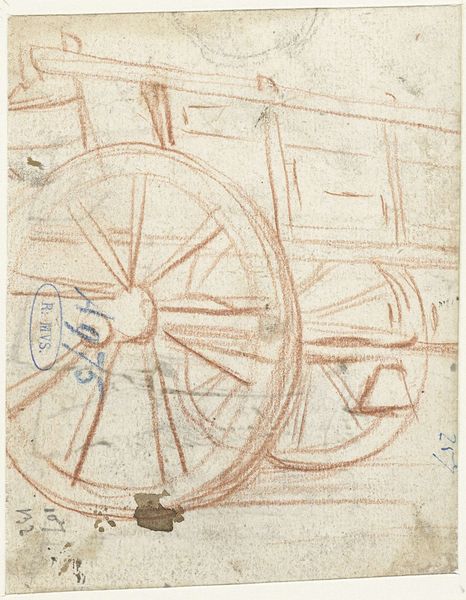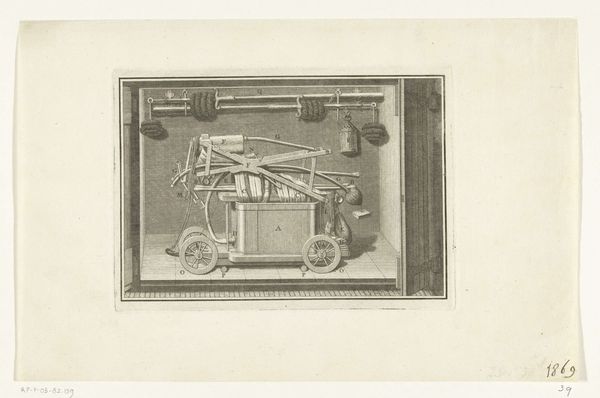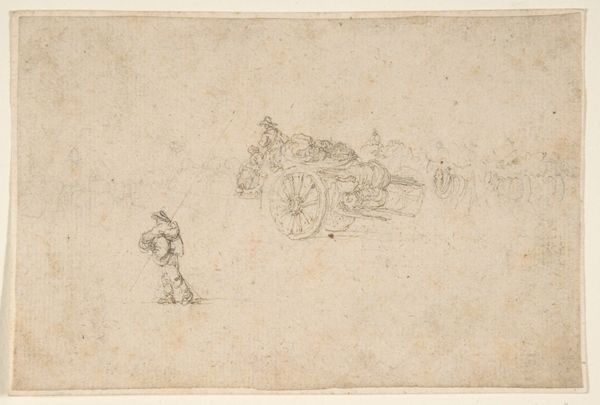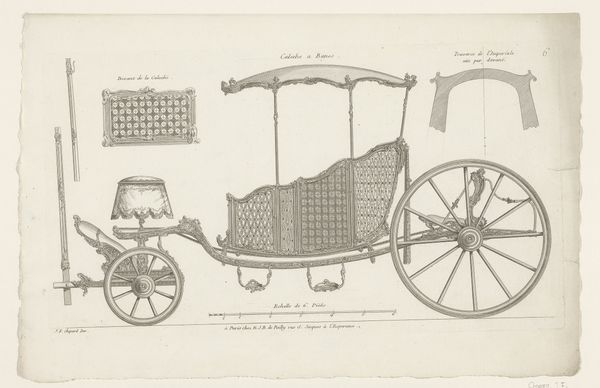
drawing, print, pencil
#
drawing
#
baroque
# print
#
pencil
Dimensions: 3-3/4 x 5-7/8 in. (9.6 x 14.9 cm)
Copyright: Public Domain
Curator: Ah, yes. "Design for a Carriage" – it's an intriguing glimpse into 18th-century transportation, unsigned and brimming with Baroque flamboyance, all rendered with pencil, pen, and gray ink. Editor: My first thought? Slightly mournful. It feels incomplete, ghostly almost. As if the carriage is waiting for passengers who will never arrive. But there's beauty in the intricate design work peeking through. Curator: It is indeed a study, a proposal perhaps, full of details intended to impress a potential client, showcase an artisan’s expertise or demonstrate a carriage maker's shop ability to incorporate the newest Baroque visual style in service of luxury. Think of the expense of a bespoke carriage like this, only those blessed, or cursed, with serious wealth could entertain such elaborate displays of power. Editor: The Baroque period does love a grand statement! But I am still pulled in by its quiet intimacy. The limited color palette focuses our gaze. We are almost invited into the seat for a brief respite, however somber it feels. Curator: And think about the intended viewer! These renderings were rarely for the public eye. Rather they existed to secure aristocratic patronage for the craftsman. This design becomes not only about mobility, but a subtle reflection of power dynamics in that era, where appearances meant everything. It would have certainly lived among piles of fabric swatches, and leather samples awaiting its commissioners. Editor: Yes, so, a form of very personal commerce at work, the creator pouring his very soul into that object. Looking closer, I see a sort of tenderness to its presentation on the page. Perhaps our anonymous artist recognized the weight of expectation in delivering something truly remarkable. That knowledge seems to live here. Curator: Beautifully observed! We are perhaps both responding to this artifact beyond simply aesthetic delight, seeing its connection to its contemporary social and financial framework of wealth creation. Editor: It really does blur the lines, doesn’t it? Art as advertisement, creativity serving commerce. Thanks for the insights on the place of art-making within culture here! Curator: And thank you for reminding us all to slow down and perceive its heart! I feel this is what historical artworks are here for – that we learn from where we have all arrived to this point, the hopes and terrors and ambitions of those who walked the same soil so long ago.
Comments
No comments
Be the first to comment and join the conversation on the ultimate creative platform.
